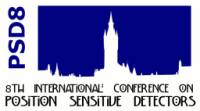Speaker
Fernando Mateo
(Universidad Politécnica de Valencia)
Description
Traditionally, the most popular technique to predict the impact position of gamma photons on a PET detector has been Anger’s logic. However, it introduces nonlinearities that compress the light distribution, reducing the useful field of view and the spatial resolution, especially at the edges of the crystal scintillator. In this work we make use of neural networks to address a bias-corrected position estimation from real stimulus obtained from a 2D PET system setup. The preprocessing and data acquisition were performed by separate custom boards, especially designed for this application. The results show that neural networks yield a more uniform field of view while improving the systematic error and the spatial resolution. Therefore, they stand as better performing and readily available alternative to classic positioning methods.
Author
Fernando Mateo
(Universidad Politécnica de Valencia)

